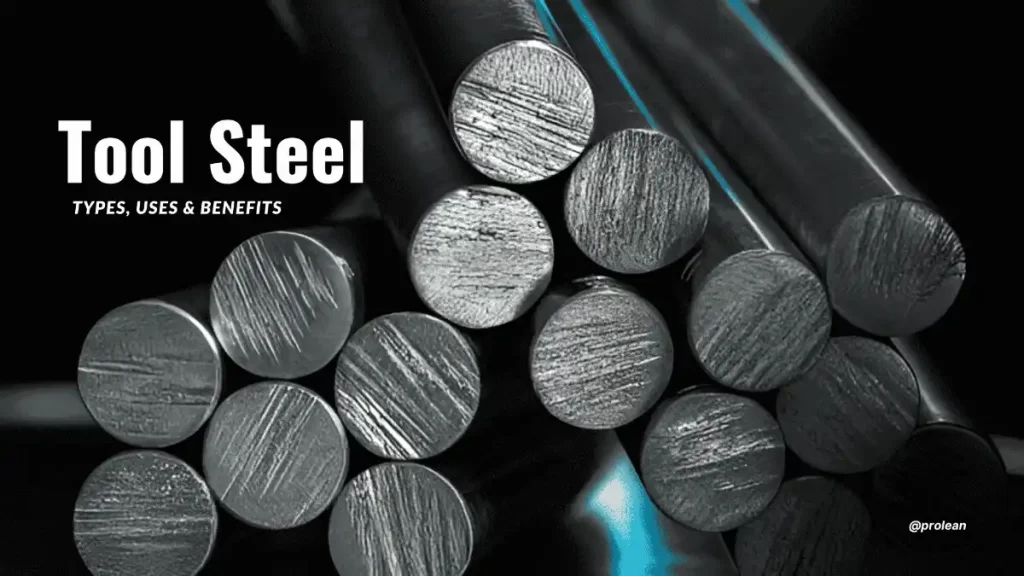
Tool Steel
More often, you need tough materials to make tools that last. That’s where alloy tool steel comes in. It’s a special carbon and alloy steel built for high strength.
You’ll use steel tools to shape wood, plastics, and metals. It works in processes like stamping, forming, and cutting. Moreover, it is used in cutters, drills, hand tools, dies, and machine parts.
Tool steel comes in many grades, each built for a purpose. In this guide, you’ll learn what makes each grade unique, what goes into tool steel, and how it’s made.
What is Tool Steel?

Tool Steel Rods
Tool steel machining is the go-to choice for the strength to count on. It is rigid, hard, and not wearable even under high heat. Tool steels have a percentage of carbon between 0.7 and 1.5. The most basic ones are between 0.2 and 2.1%.
The higher the carbon, the stronger and harder it becomes. However, tool steel hardness increases the brittleness and makes the metal challenging to weld. On cold-working, you will obtain a hardness of 58-64 HRC. Some grades may even be up to 66 HRC.
Tool steel material handles heat treatment very well. The exact treatment temperature depends on the steel’s formula. Tool steel is not simply a steel that is merely carbon; it has additional elements such as cobalt or nickel added to the mix. They increase strength and are highly heat-resistant.
Makers incorporate carbide-forming elements to make it more wear-resistant. Among those are chromium, vanadium, molybdenum, and tungsten. These form hard carbides, which increase the steel’s life. This mix will provide you with a rigid metal to undertake challenging tasks. That is why tool steel is vital in production. (See Also: steel materials)
How Is It Made?
Tool steel is mainly made in electric arc furnaces. But there are a few other key methods too. Each step shapes the steel for specific tool performance.
Electric Arc Furnace (EAF)
The process involves a furnace and melting scrap steel. After that, you will add alloying elements to achieve the appropriate mix. Chemicals help remove impurities and prevent oxidation. The molten steel can be poured into a ladle, then into moulds. Then it slowly cools down into solid ingots.
Electroslag refining (ESR)
The steel is melted extremely slowly by this process. It gives you a clean, dense, and non-porous finish. High-performance tool steels are well suited to ESR.
Powder Metallurgy
Here, you compress fine metal powders at high pressure. You should then sinter them to create a solid, dense shape. It provides you with exact control of composition and strength.
Annealing

Heat Treatment of Tool Steel (DIY)
The steel becomes soft when it is annealed. You place it at a high temperature and hold it. Then, allow it to cool at a low rate so that it is less brittle and the structure is improved.
Hot or Cold Drawing
This method helps form small or complex-shaped tools. Cold drawing occurs at room temperature. Hot drawing (for complex shapes) typically ranges between 200°C and 400°C. It is recommended to cold draw, single pass, in order not to break the tool.
Try Prolean Now!
Types of Tool Steel
Now, let’s break down the primary tool steel grades. Each grade has its mix of elements and performance traits. You’ll find unique uses for each one, depending on your application.
1. Water-Hardening (W-Series)
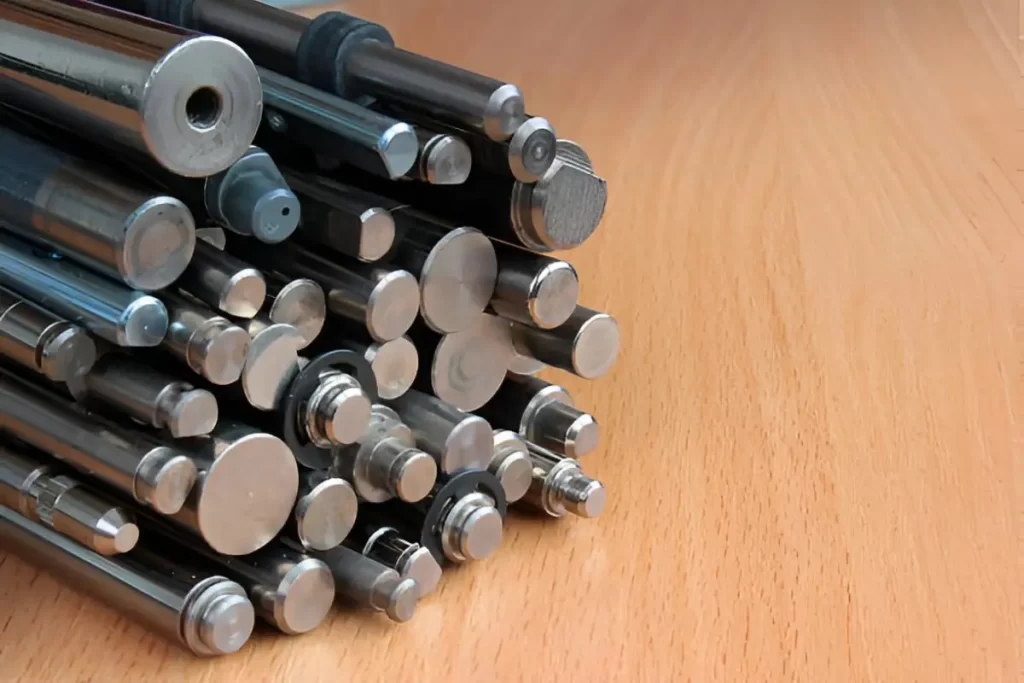
Water-Hardening
Water-hardening tool steels are high-carbon steels. These require water quenching. They offer high hardness but are prone to cracking and warping due to their low alloy content. These steels are affordable but have limited heat resistance.
- Common Grades: W1, W2, W5
- Carbon Content: 0.6–1.4%
- Alloying Elements: P20: ~1.7% Cr, 0.4% Mo; P21: ~1.2% Ni, 0.2% Al (molybdenum is typically trace/nonexistent in P-series)
- Working Temperature: 400–500°F
- Melting Temperature: 2500–2600°F
- Applications: Chisels, hammers, small drills, lathe tools
2. Shock-Resisting (S-Series)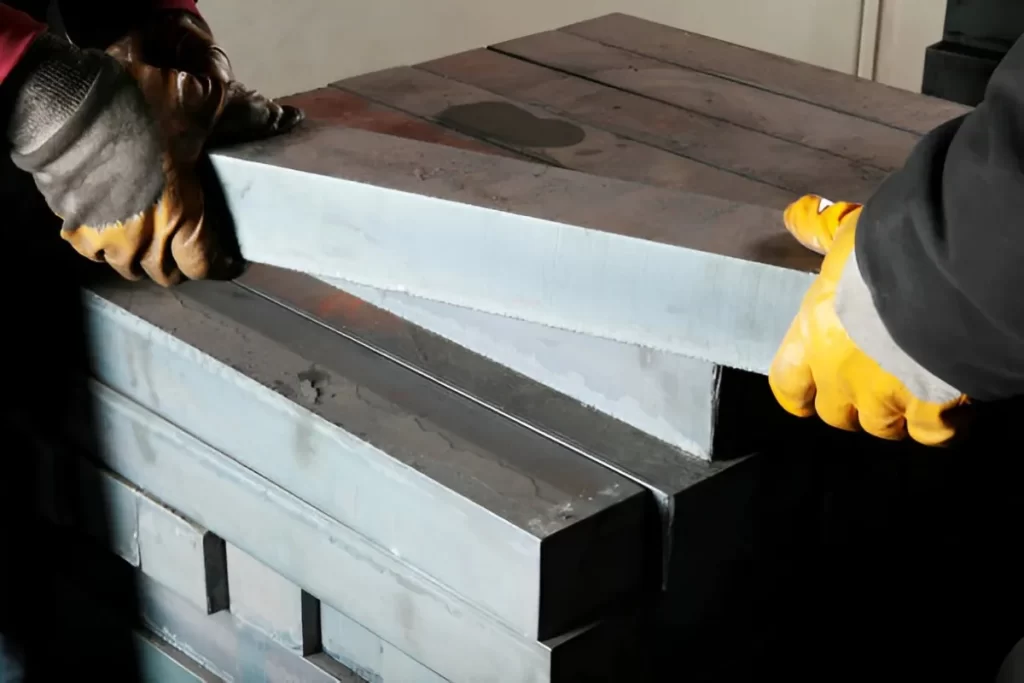
Shock-Resisting (S-Series) Tool Steel
S-series tool steels can withstand high-impact stresses at low temperatures. They provide high impact toughness and fair hot hardness. However, they are not classified as hot-hard tool steels.
- Common Grades: S1, S2, S5, S7
- Carbon Content: 0.5–0.6%
- Alloying Elements: 1.5–2.5% silicon, molybdenum, tungsten, chromium
- Working Temperature: 600–700°F
- Melting Temperature: 2700°F
- Applications: Chisels, collets, shearing blades
3. Plastic Mold (P-Series)
P20 Plastic Mold Tool Steel Rod
P-series tool steels are mainly used to manufacture molds for plastic products. They provide good machinability and resistance to thermal fatigue.
- Common Grades: P20, P21
- Carbon Content: 0.3–0.4%
- Alloying Elements: 1–2% chromium, molybdenum
- Working Temperature: 700–800°F
- Melting Temperature: 2500–2600°F
- Applications: Plastic injection molds. (Get custom steel molding services from us)
4. Cold-Working Tool Steels
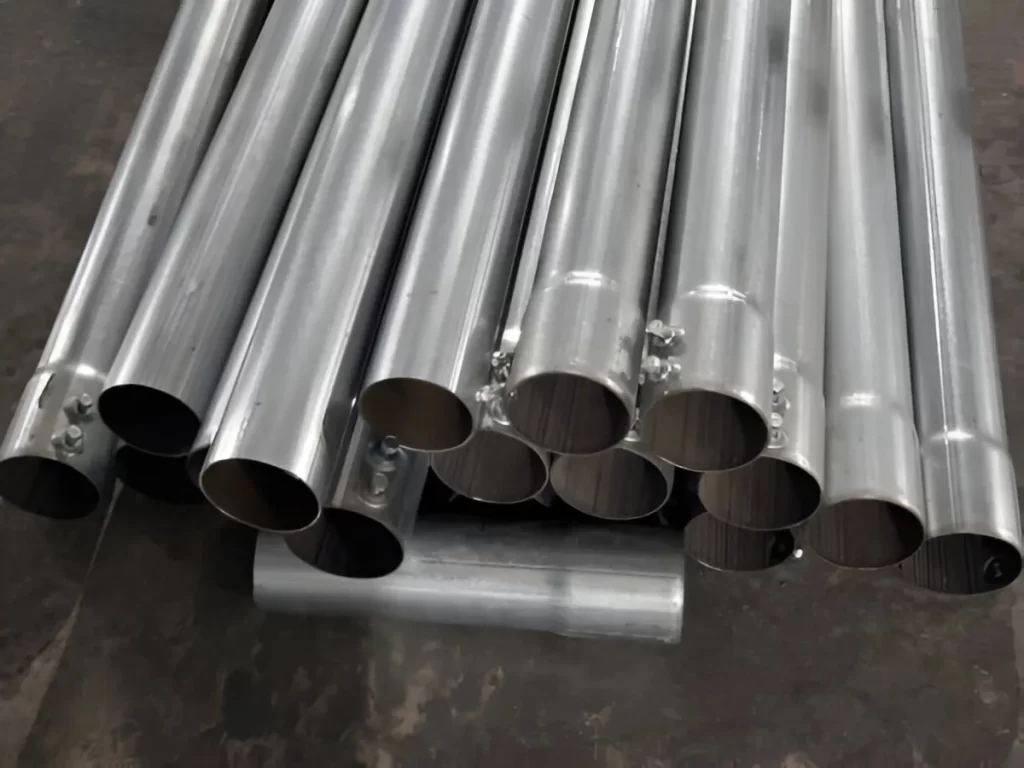
Cold-Working Tool Steel Pipes
Cold-working tool steels are used for tools that operate at room temperature. They are divided into three sub-groups:
a. Oil-Hardening (O-Series)
Oil-hardening tool steels are suitable for their wear resistance and dimensional stability.
- Common Grades: O1, O2
- Carbon Content: 0.9–1.1%
- Alloying Elements: 1–1.5% manganese, tungsten, vanadium
- Working Temperature: 400–500°F
- Melting Temperature: 2500°F
- Applications: Thread-cutting chasers, arbors, bushings, die blanking
b. Air-Hardening (A-Series)
Air-hardening tool steels have low distortion during hardening. Besides, they are tough and easily machinable.
- Common Grades: A2 tool steel, A6
- Carbon Content: 0.95–1.1%
- Alloying Elements: 4–5% chromium, 1% molybdenum, 1% manganese
- Working Temperature: 700–800°F
- Melting Temperature: 2400–2500°F
- Applications: Arbors, blanking dies, die bending
c. High Carbon and Chromium (D-Series)
D-series tool steels(D2 tool steel) are known for their high wear resistance. They are preferred for long production runs.
- Common Grades: D2, D3, D6
- Carbon Content: 1.5–2%
- Alloying Elements: 11–12% chromium, vanadium, molybdenum
- Working Temperature: 800–900°F
- Melting Temperature: 2200–2400°F
- Applications: Punches, dies, shear blades
5. Hot-Working Tool Steels
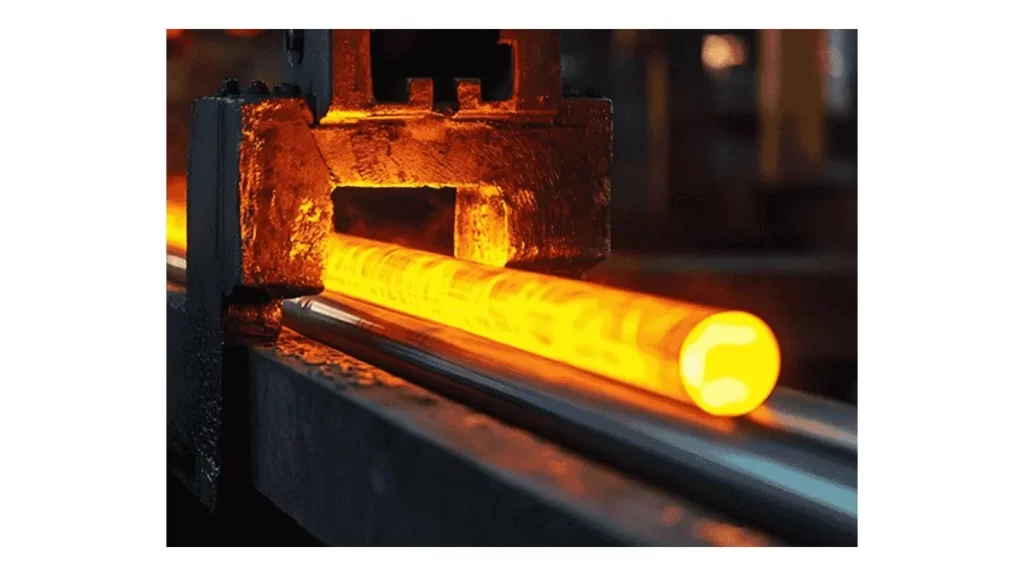
Hot-Working Tool Steel
Hot-working tool steels are used for tools that operate at elevated temperatures. They are divided into three sub-groups:
a. Molybdenum-Based (H40–H59)
These steels are used for die-casting dies. They offer good wear resistance at high temperatures.
- Common Grades: H42, H43
- Carbon Content: 0.3–0.5%
- Alloying Elements: 2–3% chromium, 8–10% molybdenum
- Working Temperature: 1100–1200°F
- Melting Temperature: 2300–2400°F
- Applications: Die-casting dies
b. Tungsten-Based (H20–H39)
Tungsten-based tool steels have high melting points and excellent wear resistance.
- Common Grades: H21, H26
- Carbon Content: 0.3–0.5%
- Alloying Elements: 2–3% chromium, 9–12% tungsten
- Working Temperature: 1200–1300°F
- Melting Temperature: 2400–2500°F
- Applications: Hot extrusion dies, forging dies
c. Chromium-Based (H1–H19)
Chromium-based tool steels are used for cold heading die casings. They offer good resistance to thermal fatigue.
- Common Grades: H11, H13
- Carbon Content: 0.35–0.45%
- Alloying Elements: 5% chromium, 1–2% molybdenum
- Working Temperature: 1000–1100°F
- Melting Temperature: 2500–2600°F
- Applications: Cold heading dies, extrusion dies
6. High-Speed Tool Steels (HSS)

High-Speed Tool Steel Rods
HSS tool steels are designed for high-speed cutting operations. They maintain hardness at elevated temperatures and are divided into two sub-groups:
a. Molybdenum-Based (M-Series)
Molybdenum-based HSS offers good wear resistance and toughness.
- Common Grades: M2, M4
- Carbon Content: 0.7–0.85%
- Alloying Elements: 5–10% molybdenum, tungsten, vanadium
- Working Temperature: 1100–1200°F
- Melting Temperature: 2200–2400°F
- Applications: Drills, taps, reamers, saw blades
b. Tungsten-Based (T-Series)
Tungsten-based HSS offers superior wear resistance. It is used for high-speed cutting of hard materials.
- Common Grades: T1, T15
- Carbon Content: 0.7–0.85%
- Alloying Elements: 12–18% tungsten, chromium, vanadium
- Working Temperature: 1100–1300°F
- Melting Temperature: 2400–2600°F
- Applications: Cutting tools, saw blades
7. Special-Purpose Tool Steels
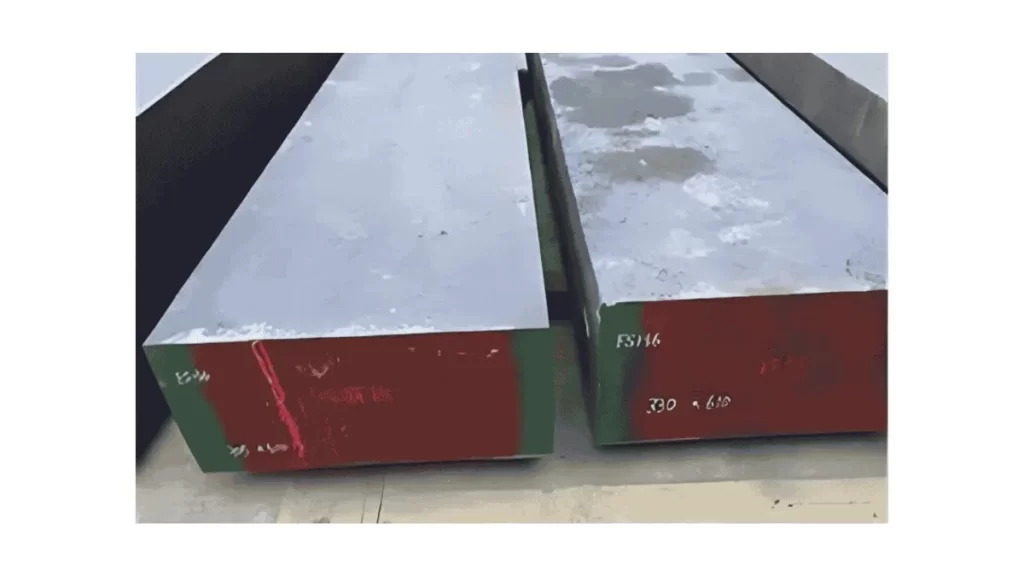
Special-Purpose Tool Steel
Special-purpose tool steels are designed for specific applications that others cannot handle.
a. Carbon-and Tungsten-Based (F-Series)
F-series tool steels are highly wear-resistant but not shock-resistant.
- Common Grades: F1, F2
- Carbon Content: 0.9–1.25%
- Alloying Elements: 4–6% tungsten
- Working Temperature: 900–1000°F
- Melting Temperature: 2500–2600°F
- Applications: Paper-cutting blades, broaches, burnishing tools
b. Low-Alloy (L-Series)
L-series tool steels are suitable for their toughness. So, they are used for various tooling applications.
- Common Grades: L6, L7
- Carbon Content: 0.7–0.9%
- Alloying Elements: Low chromium, nickel, molybdenum
- Working Temperature: 700–800°F
- Melting Temperature: 2500°F
- Applications: Bearings, clutch plates, rollers, wrenches
Try Prolean Now!
When to Use Tool Steel
Tool steel is specially designed for heavy mechanical use. You can apply it when your project or product needs one or several of the following:
High Hardness and Wear Resistance
Steel machining is used where the part is required to withstand surface wear, deformation, or abrasion during long service. It is Ideal for:
- Cutting implements (e.g., drill bits, saw blades)
- Dies and punches
- Forming tools
- Broach and reamer
Edge Retention and Precision
Tool steel can sustain sharp cutting edges under stressful and high-heat conditions. It is appropriate to make:
- Accurate machine tools
- Blades and knives
- The dies in stamping or embossing fine
Temperature Resistance
Hot-working tool steels (H-series, some HSS) resist deformation and thermal fatigue at high temperatures. Apply them in:
- Molds in die castings
- Forging dies
- Hot material extrusion tools, such as magnesium or aluminium
Shock and Impact Resistance
S-series are shock-resistant tool steels. These are preferable in components that receive sudden or repeated impacts, such as those in striking tools. They are common in:
- Jackhammer tools
- Riveting and heading tools
- Hammers and chisels
Dimensional Stability After Heat Treatment
Cold-worked/ air-hardened tool steel ( A, D series ) is most suited where the parts must retain close tolerances and not warp or twist during hardening. It is used for:
- Measuring equipment and gauges
- Precision molds
- Die complex shapes
Plastic Mold Manufacturing
P-series tool steels provide good polishability, wear resistance, and moderate machinability in manufacturing plastic injection molds or dies.
Extended Production Runs
D-series, high-speed steels (M and T series) have excellent wear resistance and are suitable for high-volume or long-life tooling.
Alternatives to Tool Steel
Standard tool steels lack rust resistance. Only the D-series (≥11% Cr) offers marginal corrosion resistance (ASTM A681-18, Section 5). However, it is not necessarily convenient and economical. It is costly, dense, and more difficult to cut. Depending on the part’s purpose, it can be made of different materials and do the same job, saving time, cost, or weight. This is why manufacturers usually trade off a project’s functions, environment, and budget, leading to the use of alternatives.
Aluminum
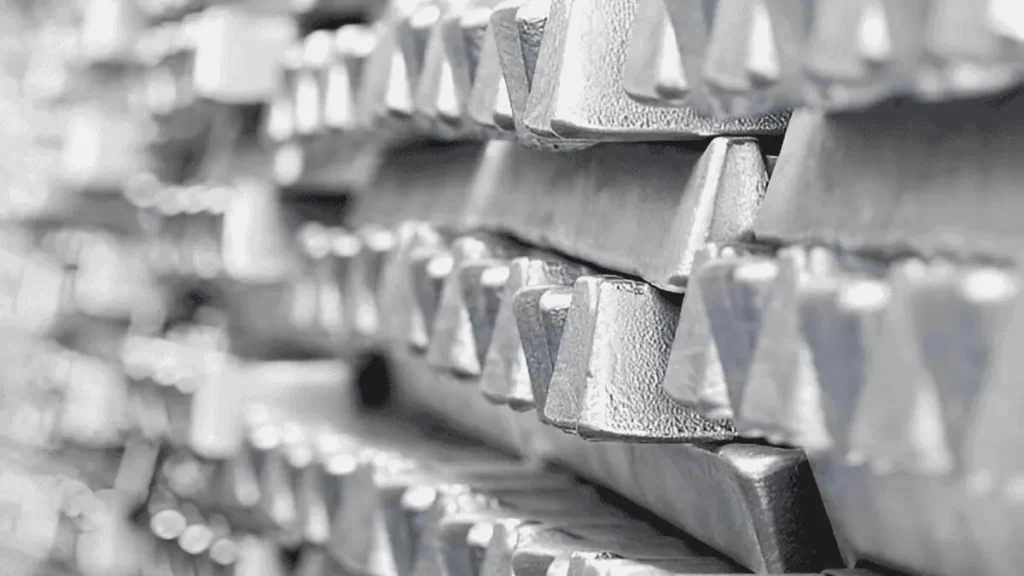
Raw Aluminum Bars
Aluminum is commonly applied when weight is an issue. It is also much lighter than stainless stainless tool steel and can be machined more easily, making it cheaper and faster. Aluminum has less than 20% of the yield strength of tool steel (even high-strength 7075-T6: ~83 ksi vs. D2: ~350 ksi). It is unsuitable for high-stress tooling.
Carbon steel
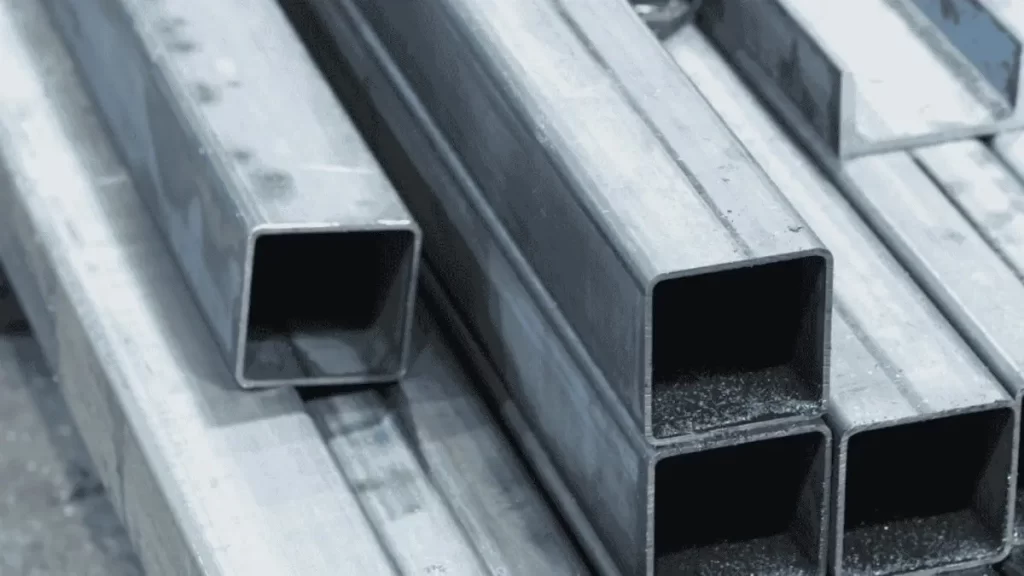
Carbon Steel
Carbon steel suits you better if you do not require rust protection. It is high strength, cheap, and suitable for structural components, frames, etc. It does not fare too well in damp or corrosive conditions until they are treated or painted. However, it is a stable and cost-effective choice in dry environments.
Titanium

Titanium Sheets
Titanium is recommended where high strength and corrosion resistance are required. It is lightweight when compared to tool steel, yet as strong. It is commonly found in the aerospace, medical, and marine fields. Titanium is more expensive but pays off when reliability and long-term performance are the most important.
Brass or Bronze
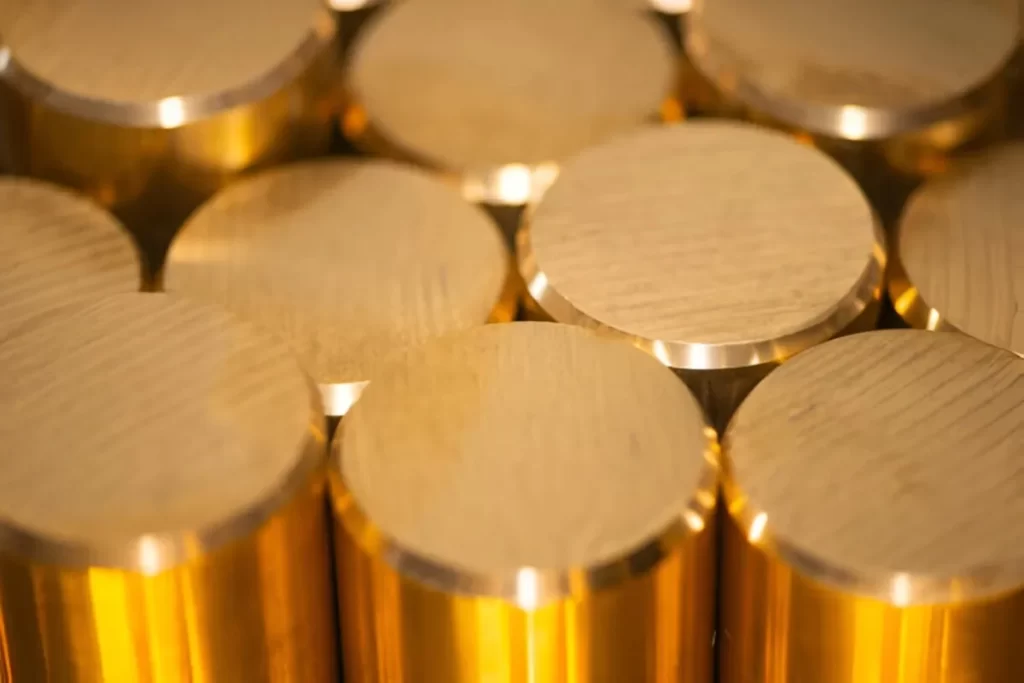
Brass Bars
Bronze and brass are ideal when appearance or special characteristics are of importance. These metals are non-rusting and can be machined easily. So, they are primarily employed in plumbing fittings, decorative, and other electrical devices. Brass is also antimicrobial and can be applied in medicine or food.
Summary
Tool steel is a strong, hard, and wear-resistant material. Make-sake tools, molds, dies, and parts must be handled in harsh working conditions. It’s a great choice when you need parts that can resist heat, last a long time, and keep their shape under pressure.
At Prolean Tech, we offer custom steel machining for all types of tool steel, including high-speed steel, hot-work steel, cold-work steel, and more. Each grade of tool steel has different strengths, and our team knows how to work with them to get the best results. We use the right tools, speeds, and methods to efficiently machine tool steel parts.
FAQ’s
Q1. What are the 6 types of tool steels?
The six common types of tool steels are:
- Water-hardening (W)
- Shock-resisting (S)
- Cold-work (O, A, D series)
- Hot-work (H series)
- High-speed steel (M, T series)
- Special purpose (F and L series)
Q2. Is 4140 steel a tool steel?
No, 4140 is a steel alloy, not a true tool steel. However, it is often used for tools and dies because of its strength and toughness.
Q3. Is tool steel stronger than steel?
Tool steel is generally stronger and harder. It is more wear-resistant than standard carbon or alloy steels because it’s specially designed for cutting, shaping, and high-stress applications.
Q4. What are the cons of tool steel?
Tool steel can;
- Be brittle if not heat-treated properly.
- More challenging to machine than mild steel
- Typically more costly
- Lower corrosion resistance compared to stainless steel

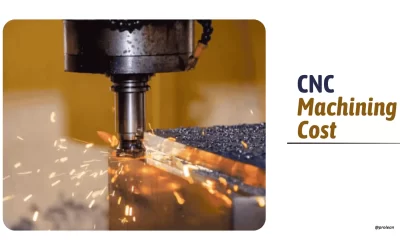
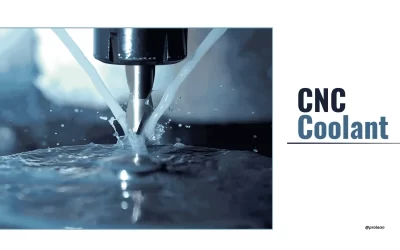

0 Comments